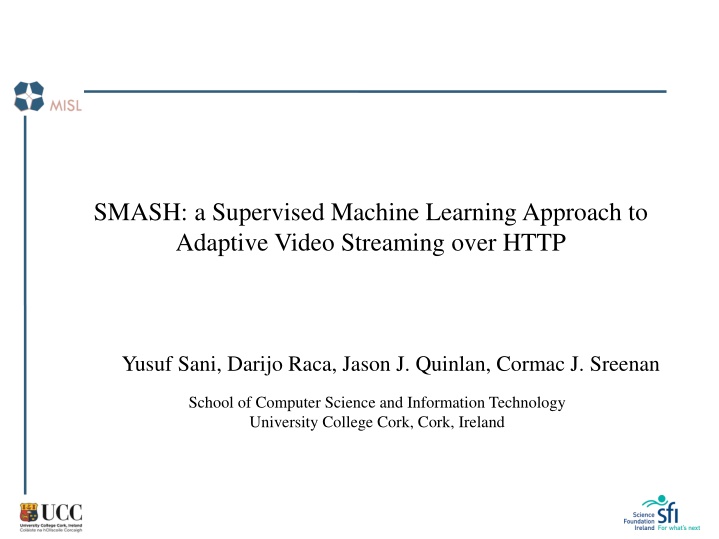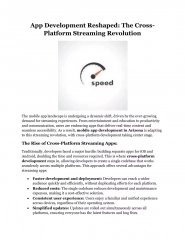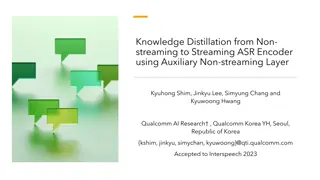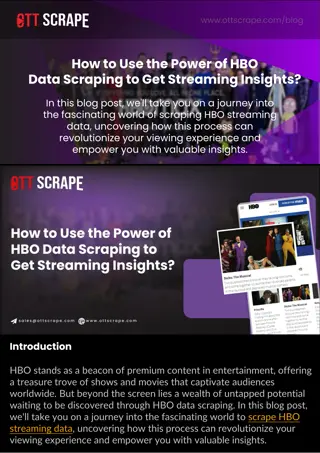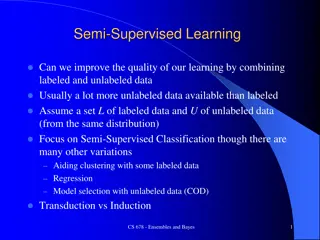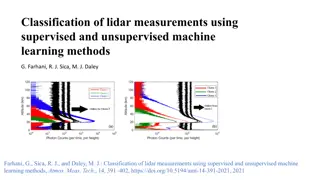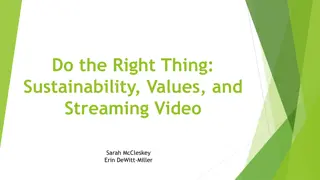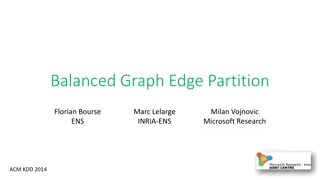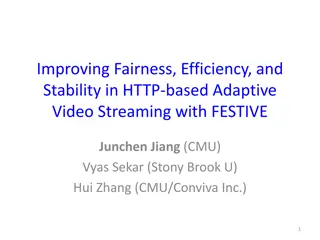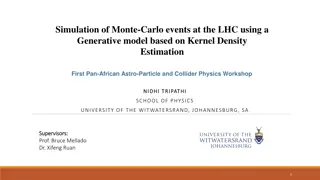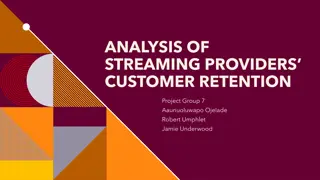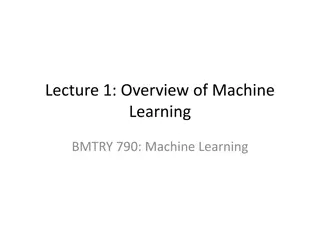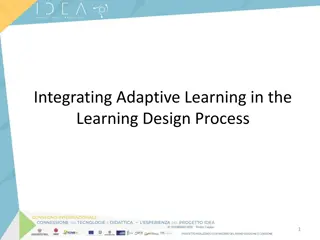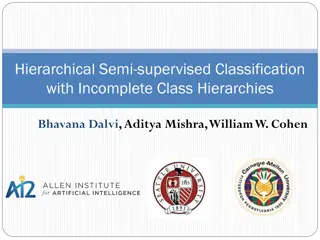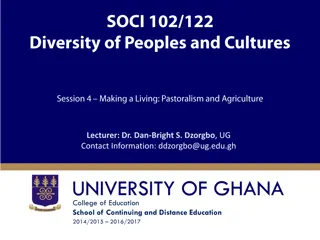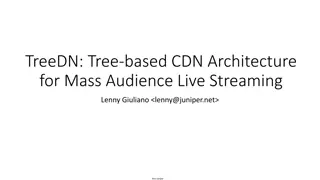SMASH: Adaptive Video Streaming with Supervised Machine Learning
This study presents "SMASH," a Supervised Machine Learning Approach for Adaptive Video Streaming over HTTP. It explores the limitations of heuristic-based approaches and introduces ML-based models for enhanced adaptivity. The methodology involves data generation, feature selection, model training using various classifiers, and performance evaluation, offering a novel perspective on improving video streaming quality.
Download Presentation

Please find below an Image/Link to download the presentation.
The content on the website is provided AS IS for your information and personal use only. It may not be sold, licensed, or shared on other websites without obtaining consent from the author.If you encounter any issues during the download, it is possible that the publisher has removed the file from their server.
You are allowed to download the files provided on this website for personal or commercial use, subject to the condition that they are used lawfully. All files are the property of their respective owners.
The content on the website is provided AS IS for your information and personal use only. It may not be sold, licensed, or shared on other websites without obtaining consent from the author.
E N D
Presentation Transcript
SMASH: a Supervised Machine Learning Approach to Adaptive Video Streaming over HTTP Yusuf Sani, Darijo Raca, Jason J. Quinlan, Cormac J. Sreenan School of Computer Science and Information Technology University College Cork, Cork, Ireland
Outline Introduction Motivation Data Generation Feature Selection Model Training Performance Evaluation Conclusion
Introduction HTTP-based Adaptive Streaming Adaptive Bitrate Selection (ABR) Algorithms Heuristic based: BBA-2[1], Arbiter+[2] Machine Learning-based: Pensive[3]
Motivation Heuristic-based approach is based on a fixed set of rules the do not generalized well. The first group ML-based ABRs dynamically reconfigure the parameters of an existing algorithms. The second set of schemes rely on trained predictive ABR, however a several studies have found them to be sensitive to: reward function, network traces, video representation used in training.
Hypothesis/Methodology A simple and effective ABR module can be built by training a predictive model, using a large collection data generated from streaming several state-of-the-art ABRs, with each of the ABR used, optimised to serve a specific streaming context. Empirical experiments based on heterogeneous wireless technology network traces
Data Generation Rate Base Buffer Base Hybrid Technology Number of Traces Mode Minimum rate BBA-2 Arbiter+ 3G 30 Static, Pedestrian, Bus, Car, Tram, Train Median rate Elastic Conventional 4G 25 Static, Pedestrian, Bus, Car, Train Exoplayer Default Logistic BOLA WiFi 5 Pedestrian, Static
Feature Selection Features correlation matrix Rep_Level_1 Avg_Rep_Level_5 Del_rate Act_rate_1 Act_rate_2 Byte_size Buffer_Level Avg_throughput Mutual Information score
Model Selection Logistic Regression (LR) Quadratic Discriminant Analysis (QDA) K-Nearest Neighbors (KNN) Decision Tree Classifier (DTC) Gaussian Naive Bayes (NB) Ada Boost Classifier (ADO) Random Forest Classifier (RFC) Multi-layered perceptron (NN) RFC
Result 3g 4g Wifi SMASH outperforming the state- of-the-art players.
Conclusion We present a Supervised Machine learning approach to Adaptive Streaming over HTTP (SMASH). The results validate our hypothesis, that is, the best way to generalise the performance of an ABR algorithm is for a predictive model to learn the method of streaming from many high performing ABR schemes.
Refence T. Huang, R. Johari, N. McKeown, M. Trunnell, and M. Watson, A Buffer-based Approach to Rate Adaptation: Evidence from a Large Video Streaming Service, in 2014 ACM Conference on SIGCOMM 1. A. H. Zahran, D. Raca, and C. J. Sreenan, ARBITER+: Adaptive RateBased InTElligent HTTP StReaming Algorithm for Mobile Networks, IEEE Transactions on Mobile Computing 2. H. Mao, R. Netravali, and M. Alizadeh, Neural Adaptive Video Streaming with Pensieve, in Proceedings of the Conference of the ACM Special Interest Group on Data Communication. 3.
Thank you Yusuf Sani, Darijo Raca, Jason J. Quinlan, Cormac J. SreenanSchool of Computer Mobile and Internet Systems Laboratory (https://www.ucc.ie/en/misl/) Science and Information TechnologyUniversity College Cork, Cork, Ireland {ys8, d.raca, j.quinlan, cjs}@cs.ucc.ie} This publication has emanated from research conducted with the financial support of Science Foundation Ireland under Grant 13/IA/1892, acknowledges the support of SFI Grant 13/RC/2077 and also SFI Grant 18/IF/6354
